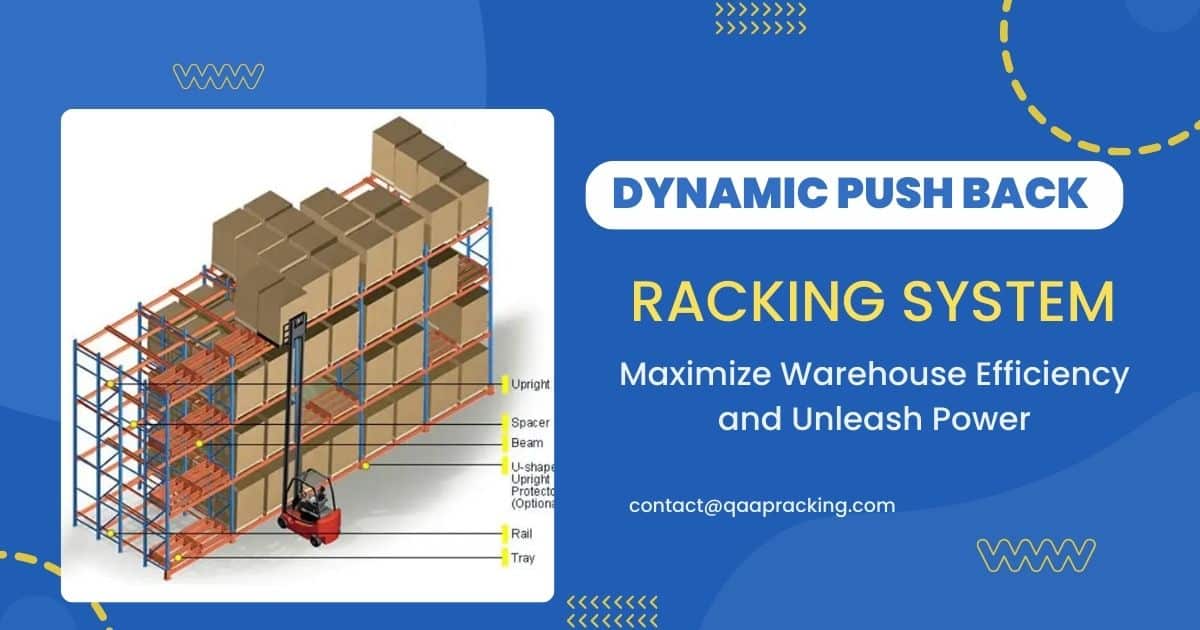In the fast-paced world of logistics and supply chain management, the efficiency of warehouses plays a crucial role in the success of businesses. One innovative solution that has gained significant attention is back racking. In this article, we will delve into the concept of back racking, explore its benefits, discuss its implementation in warehouses, compare it with traditional racking methods, examine how it optimizes space and showcase case studies of successful back racking implementations.
Introduction to Back Racking
Warehouses serve as the backbone of supply chains, acting as storage hubs for various products before they reach their final destinations. Back racking, also known as push-back racking, is a storage solution that maximizes warehouse space while ensuring efficient inventory management. Unlike traditional racking, where items are stored on shelves accessed from the front, back racking utilizes a system where items are stored on inclined rails that allow products to be loaded from the front and retrieved from the back.
Benefits of Back Racking
Optimized Space Utilization: Utilizing depth rather than just height, back racking empowers warehouses to make the most of their available space. This approach to space utilization enhances storage capacity within the same physical footprint.
Time and Effort Savings: The innovative design of back racking ensures that products automatically move to the rack’s front as the previous item is retrieved. This eliminates the need for staff to enter the rack system, resulting in quicker retrieval times and heightened overall efficiency.
Last-In, First-Out (LIFO) System: Following the LIFO principle, back racking proves especially beneficial for items with expiration dates. This system automatically prioritizes older stock at the front, reducing the risk of products becoming outdated.
Minimized Forklift Movement: Back racking effectively reduces the requirement for forklifts to access the rack system, which in turn decreases the likelihood of accidents and safeguards both the rack structure and the stored items
Implementing Back Racking in Warehouses

Implementing back racking requires careful planning and consideration. Here’s a step-by-step guide to its successful implementation:
1. Warehouse Assessment
Evaluate the existing warehouse layout, inventory volume, and flow of goods to determine if back racking is suitable for your needs.
2. Design Customization
Collaborate with storage experts to design a back-racking system that caters to your specific product dimensions and weight requirements.
3. Installation
Professional installation is crucial to ensure the safety and functionality of the back racking system.
4. Employee Training
Train warehouse staff on the proper usage of the system, emphasizing safety protocols and efficient retrieval techniques.
5. Maintenance and Monitoring
Regularly inspect and maintain the back racking system to address any issues promptly and ensure its continued smooth operation.
Back Racking vs. Traditional Racking
When comparing back racking to traditional racking methods, several key differences emerge:
Traditional racking prioritizes vertical storage, while back racking focuses on depth.
Back racking offers higher storage density compared to traditional racking.
Traditional racking might require more aisle space for forklift movement, reducing overall storage capacity.
Space Optimization with Back Racking
Back racking is particularly advantageous for warehouses dealing with a high volume of products with varying dimensions. The system’s flexibility allows for efficient storage of different-sized items without wasting space.
Case Studies of Successful Back-Racking Implementations
Company X: Automotive Parts Distribution
By implementing back racking, Company X increased its storage capacity by 35% within the same warehouse space. This efficiency boost resulted in faster order fulfillment and improved customer satisfaction.
Company Y: Pharmaceutical Distribution
Company Y adopted back racking to manage its pharmaceutical inventory. The LIFO system ensured that medications with upcoming expiration dates were dispatched first, minimizing waste and ensuring product quality.
Conclusion
Back racking presents a forward-thinking approach to warehouse management, offering enhanced space utilization, time savings, and efficient inventory management. As businesses seek innovative ways to optimize their supply chains, embracing solutions like back racking can lead to improved operational efficiency and customer satisfaction.
FAQs
Is back racking suitable for all types of products?
Back racking is particularly beneficial for products with expiration dates or those that require efficient inventory rotation. However, its applicability depends on individual warehouse needs.
How does back racking contribute to workplace safety?
Back racking reduces the need for forklifts to enter the rack system, minimizing the potential for accidents and collisions with employees.
Can existing warehouses be retrofitted with back racking?
Yes, existing warehouses can often be retrofitted with back racking systems, provided there is enough space and structural support.
Does back racking require special maintenance?
Like any storage system, back racking requires regular maintenance to ensure its smooth operation. This includes inspecting rails, ensuring proper alignment, and addressing any issues promptly.
What industries can benefit most from back racking?
Industries dealing with fast-moving consumer goods, perishable items, and products with varying dimensions can benefit significantly from the efficiency of back-racking systems.

